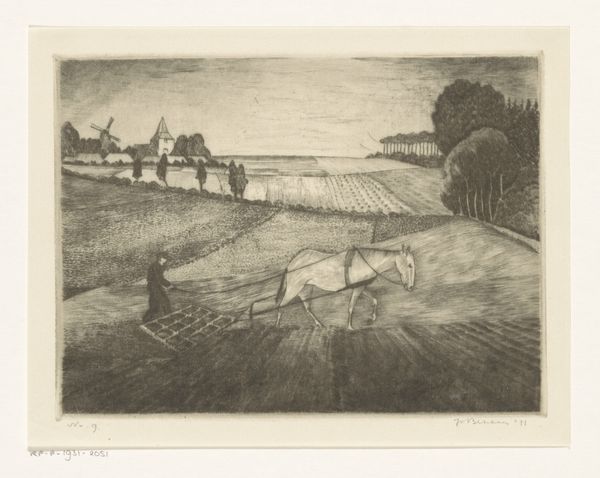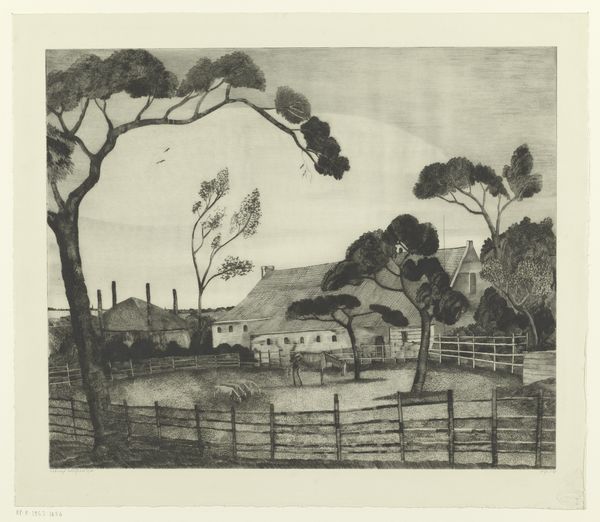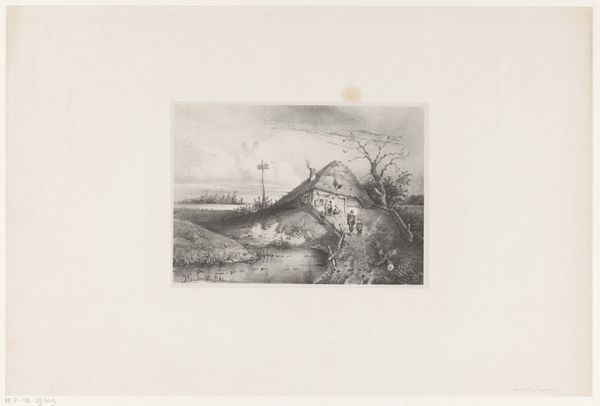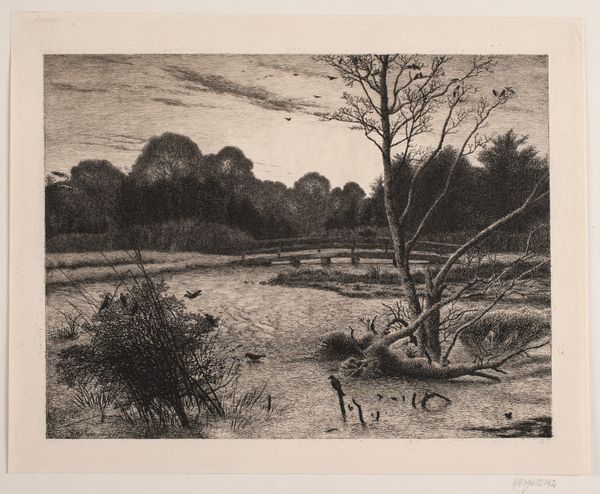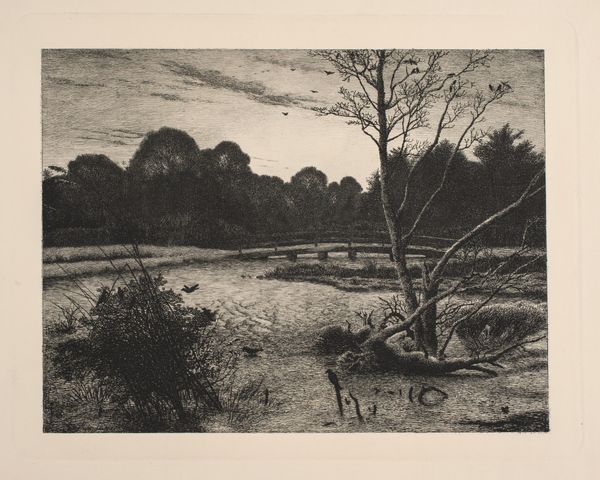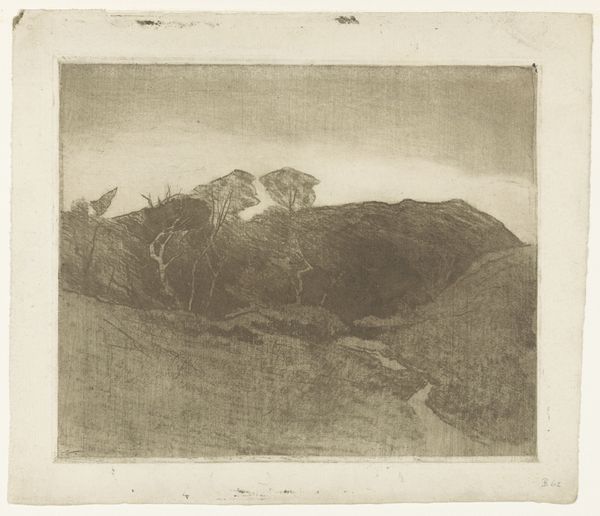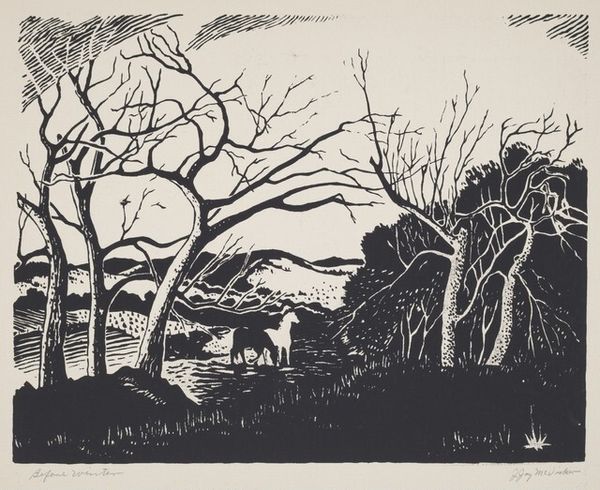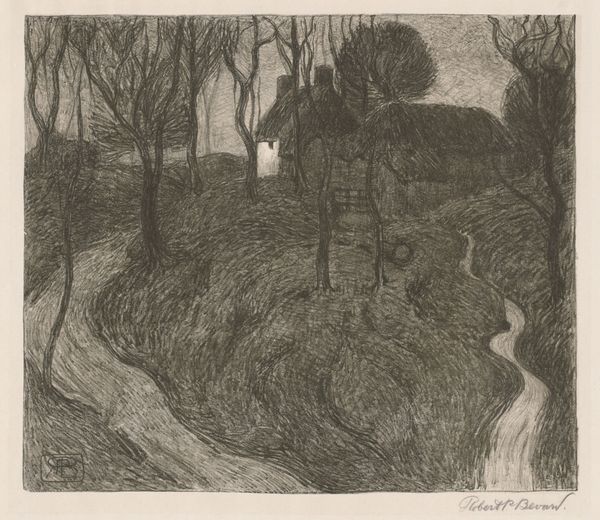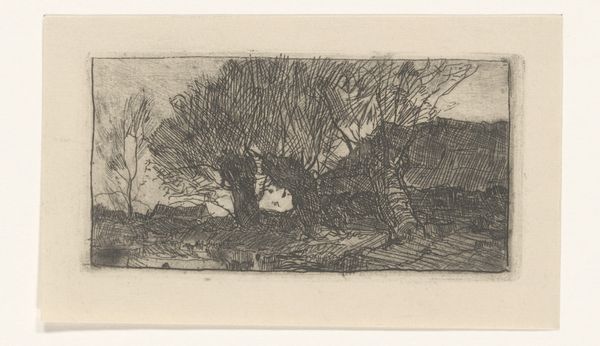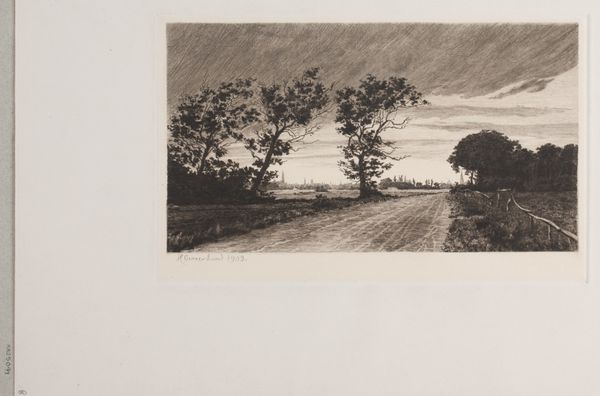
print, etching
# print
#
etching
#
landscape
#
realism
Dimensions: height 495 mm, width 645 mm
Copyright: Rijks Museum: Open Domain
Curator: Right, let's talk about "Ploegende boer met een os bij Etikhove," or "Plowing Farmer with an Ox near Etikhove," an etching crafted in 1926 by Lodewijk Schelfhout. What are your first thoughts? Editor: Melancholy. A certain rural heaviness hangs in the air. The stark contrasts create a somber atmosphere, and even the windmill in the distance seems weighed down by the vast landscape. Curator: The artist truly captured a stillness, didn't he? There is the farmer toiling along with an ox, yet everything else stands firmly. Schelfhout may have tried to tap into those rural settings where farmers’ routine shaped their identities and connection to their landscape. Editor: Yes, the landscape itself feels symbolic. Notice the positioning of the windmill – almost like a sentinel overseeing the unending labor in the fields. Windmills always remind me of cycles: grind, transform, and begin again. It’s a machine mirroring natural patterns. It is such a classical way of portraying the landscape. Curator: The etching technique enhances that feeling. There's a depth and texture created by the tiny lines. Each of them individually adding more texture to a life of toil and agricultural burden. The contrast between light and shadow emphasizes the quiet strength in both farmer and animal. Editor: The lone tree in the foreground, with its almost skeletal branches, is quite striking as well. It is stoic but evokes thoughts of fragility and resilience against the seasons. The visual symbol suggests this kind of awareness, as the tree's symbolism represents life’s endurance and mortality co-existing. Curator: Absolutely. The landscape here echoes cycles of life that can make us face our mortality while acknowledging the endless transformations we humans can do when collaborating with it, but the question remains: what are we doing with these resources and for what cause? Editor: Right, and in this image the presence of humans on earth is not as destructive as the machinery we have now in modern agriculture, and this feels very thought provoking! Thanks for revealing all that.
Comments
No comments
Be the first to comment and join the conversation on the ultimate creative platform.

